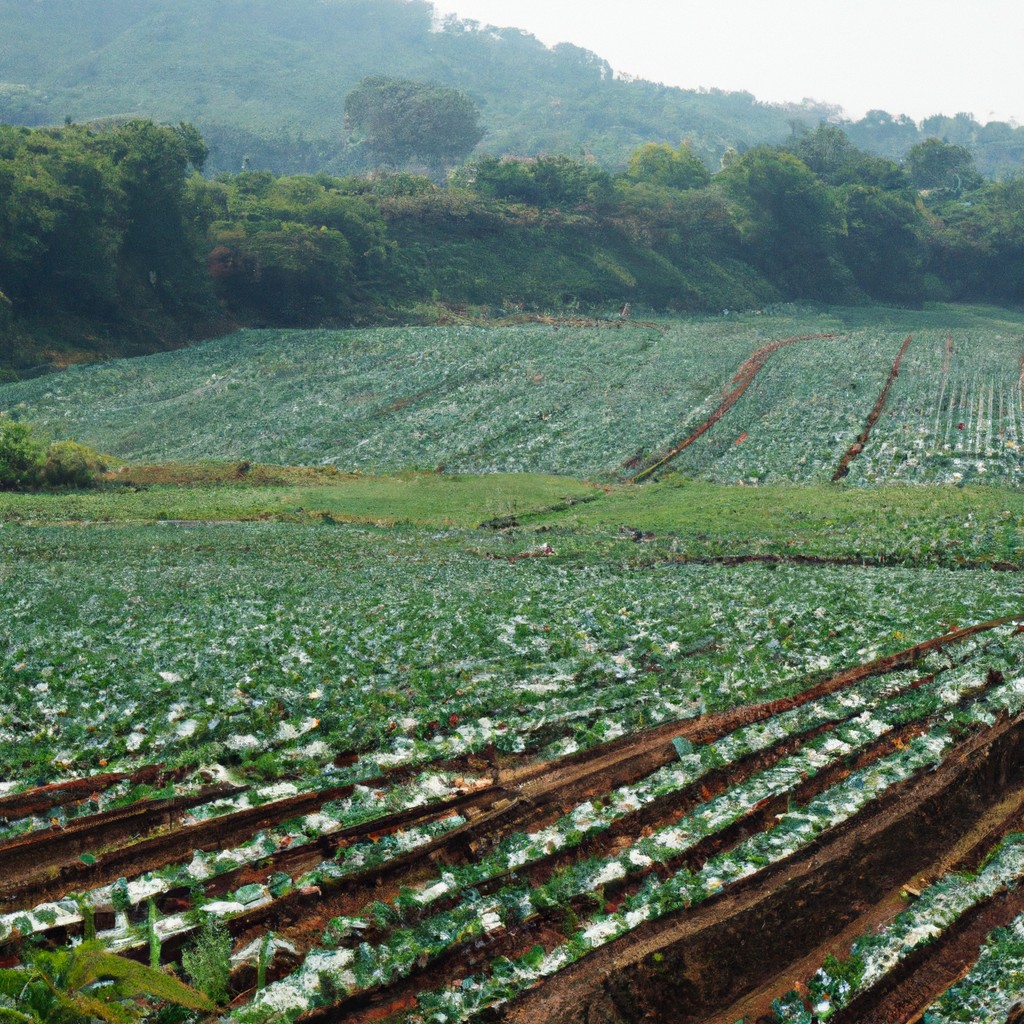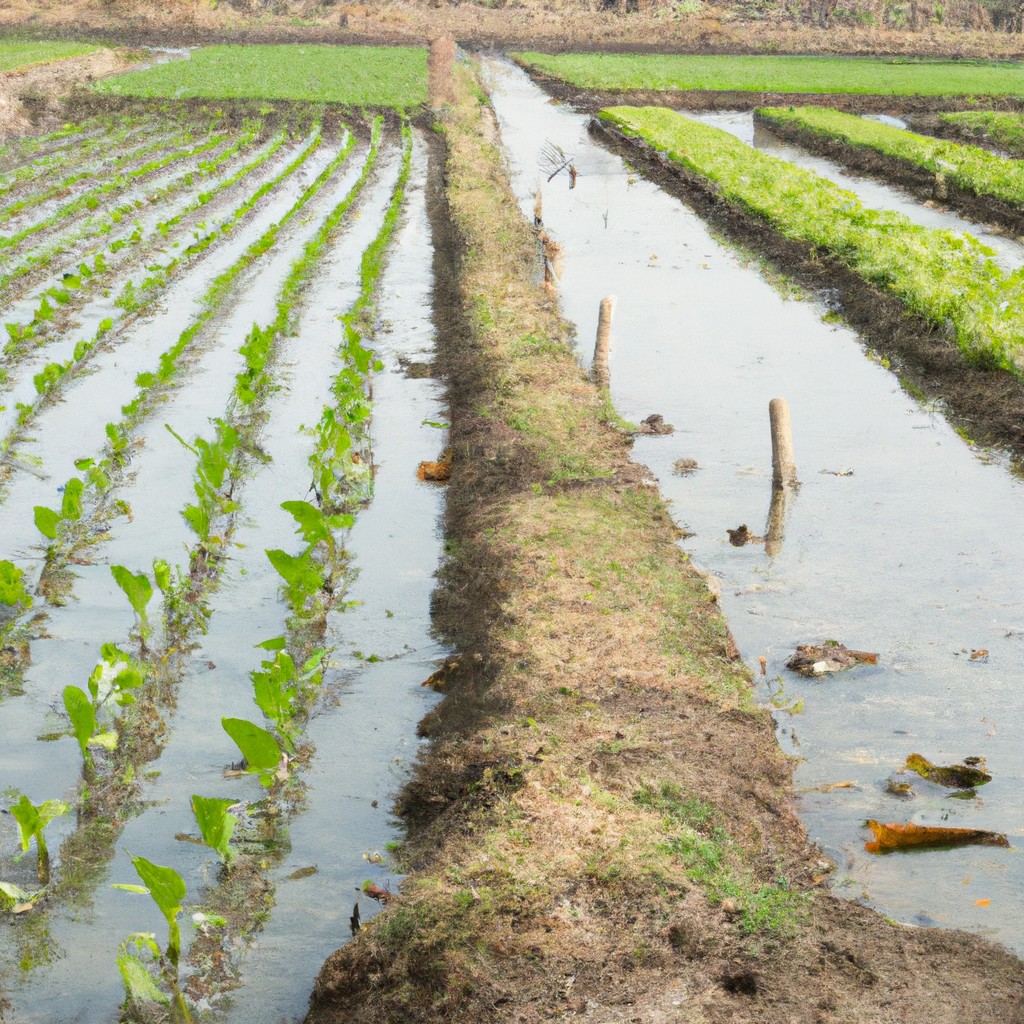Subsistence farming is a self-sufficiency farming system in which farmers grow enough food to feed themselves and their families; this article provides insights into its methods, benefits, and challenges.
Look Inside:
Definition of Subsistence Farming

Subsistence farming centers on growing enough food to feed oneself and one’s family, with little surplus for sale or trade. It characterizes agricultural practices spread across the globe, especially in rural areas where farmers rely heavily on their output for sustenance.
- The emphasis in subsistence farming is on self-sufficiency.
- Crop choices are often diverse to meet the family’s nutritional needs and to adapt to local climate and soil conditions.
- Techniques used are typically labor-intensive but low in technology and capital investment.
- Landholdings are often small, due to the focus on meeting immediate household food requirements rather than generating income.
- External resources such as fertilizers and pesticides are minimally used, if at all, largely due to financial constraints.
- This farming system is closely tied to the rhythms of seasons and ecological cycles.
Understanding the foundational aspects of subsistence farming gives context to the economic and environmental dynamics local farmers navigate.
Contemporary Practices
Despite subsistence farming being an age-old practice, various contemporary techniques have been integrated to enhance self-sufficiency and sustainability. Crop rotation, polyculture, and permaculture are commonly applied strategies that help maintain soil fertility and reduce pests and diseases. These methods support a more holistic, self-reliant approach to agriculture by tapping into natural processes and ecological balances.
Additionally, with water being a crucial resource, rainwater harvesting and drip irrigation have gained popularity among subsistence farmers aiming to mitigate the challenges of irregular rainfall and water scarcity. These practices ensure efficient water management that aligns with the conservation ethos central to subsistence farming.
Furthermore, the integration of small-scale livestock rearing contributes to diversification and resilience of subsistence farms by providing a source of manure for improving soil fertility, thus closing the nutrient loop. Goats, chickens, and ducks are among the livestock commonly kept by subsistence farmers, which serve multiple purposes, including meat, eggs, and feathers.
Advancements in renewable energy technologies, such as solar-powered systems, have begun to play a role as well. These technologies provide rural communities with access to power for basic needs, such as lighting and small appliances, thereby enhancing the quality of life while maintaining the principles of self-reliance and environmental stewardship.
Types of Subsistence Farming
Subsistence farming manifests in various forms, each shaped by the geographical, climatic, and cultural contexts. Slash-and-burn agriculture, also known as shifting cultivation, involves clearing forest land for crops until its fertility wanes, then moving to a new area to begin the process again. This type is common in tropical rainforest regions such as the Amazon.
Another practice is nomadic herding, where farmers move their livestock according to seasonal patterns, searching for pastures. This is prevalent in arid and semi-arid regions where fixed agriculture is unsustainable.
Intensive subsistence farming is seen in more populous regions. Here, farmers work smaller plots of land very intensely, using simple tools and traditional methods. The goal is to produce enough on a small parcel to meet the needs of a family, often with little surplus.
Rice paddies in Asia exemplify wet paddy farming, requiring complex irrigation and labor-intensive techniques to grow rice in flooded fields. This method produces relatively high yields for the amount of land used, which is vital in heavily populated areas.
Rudimentary sedentary tillage differs in that it relies on the use of more permanent and less mobile farming plots, and farmers use manure and fallow periods to maintain soil fertility.
Each type balances sustainability with immediate family or community necessities, adapting to the limitations and advantages of their individual environments.
Challenges Faced By Subsistence Farmers
Subsistence farmers grapple with a multitude of obstacles that affect their ability to thrive and maintain their livelihoods.
Access to resources such as quality seeds, water, and fertile land is often limited. This scarcity is exacerbated by environmental factors like climate change, which can lead to unpredictable weather patterns, droughts, or floods, making it challenging to grow crops consistently.
Another hurdle is the lack of financial services such as credit or insurance, which are necessary for investing in better farming equipment or safeguarding against crop failures. Without these financial supports, subsistence farmers are vulnerable to cycles of poverty.
Pests and diseases also pose significant threats to crops and livestock. Subsistence farmers may not have access to or the means to purchase appropriate pest control methods or veterinary services, leaving their yields and food security at risk.
Infrastructural issues, including poor transportation networks, hinder subsistence farmers’ access to markets. This can lead to difficulties in selling produce or buying necessary supplies, often resulting in economic isolation.
These challenges are compounded by political instability and conflicts in some regions, which disrupt food production and distribution, creating additional vulnerabilities for subsistence farming communities.
Future Outlook for Subsistence Farming Communities
Climate change, market fluctuations, and technological advancements are reshaping the future of subsistence farming. With increased weather unpredictability, subsistence farmers are exploring adaptive strategies, such as diversifying crops to include those that are drought-resistant or flood-tolerant. They are also incorporating traditional knowledge with modern agricultural practices to enhance resilience.
Another significant development is the integration of subsistence farms into larger food systems via local farmers’ markets and cooperatives. This shift not only provides farmers with a more reliable income but also helps sustain local economies and strengthens food security.
As connectivity improves, there’s a growing potential for subsistence farmers to use mobile technologies for better access to information, such as weather forecasts and market prices, enabling more informed decision-making. Additionally, non-governmental organizations and government programs are increasingly focusing on empowering these communities with education and resources aimed at increasing productivity sustainably.
However, challenges like land tenure issues and the need for improved infrastructure persist. Continued advocacy and policy support are crucial for securing land rights and investments in rural development.
The emergence of global networks and support systems further suggests a paradigm shift towards recognizing and valuing the role of subsistence farmers in the broader context of environmental conservation and food sovereignty. This interconnectedness fosters knowledge exchange and provides a platform for subsistence farmers to voice their needs and insights on a global stage.




